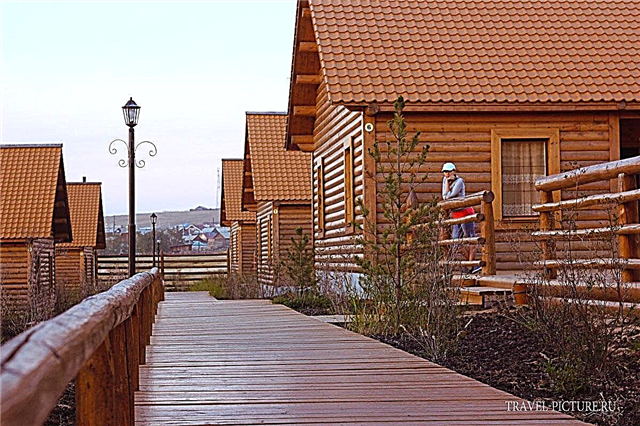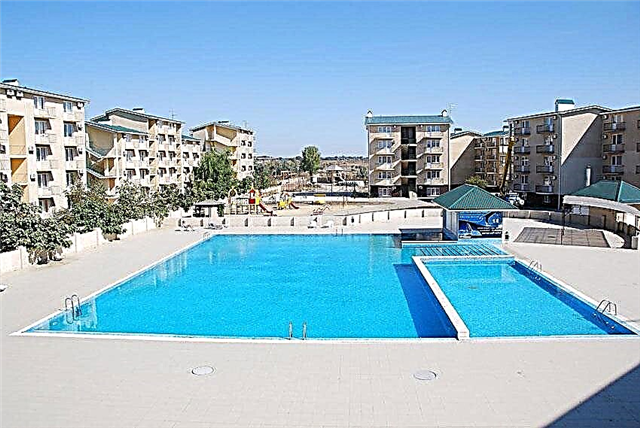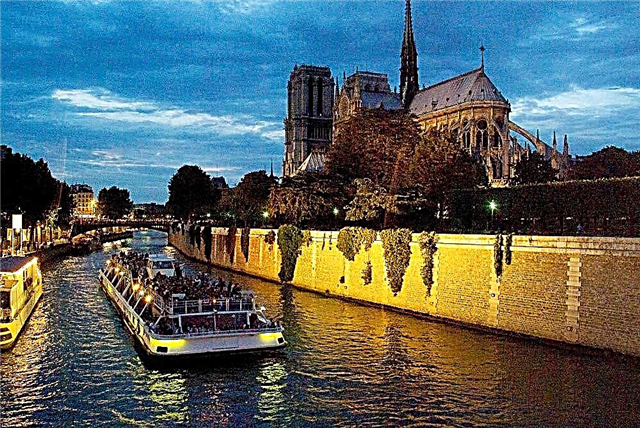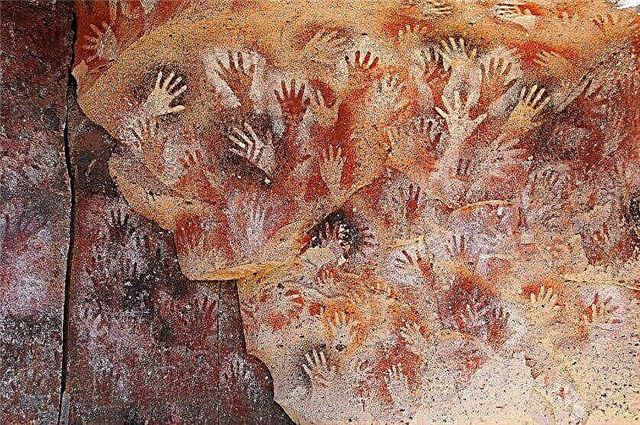Man has always gravitated towards art. Proof of this is the numerous rock paintings around the planet, created by our ancestors tens of thousands of years ago. Primitive creativity is evidence that people lived everywhere - from the hot African savannah to the Arctic Circle. America, China, Russia, Europe, Australia - everywhere ancient artists left their marks. One should not think that primitive painting is completely primitive. Among the rock masterpieces, there are also very skillful works, surprising with their beauty and technique of execution, painted with bright colors and carrying a deep meaning.
Petroglyphs and rock paintings of ancient people
Cueva de las Manos cave
The cave is located in the south of Argentina. For a long time, the ancestors of the Indians of Patagonia lived here. On the walls of the cave, drawings were found depicting a scene of hunting wild animals, as well as many negative images of the hands of teenage boys. Scientists have made the assumption that drawing the outline of the hand on the wall is part of the initiation rite. In 1999, the cave was included in the UNESCO World Heritage List

Serra da Capivara National Park
After the discovery of many monuments of rock art, the area located in the Brazilian state of Piauí was declared a national park. Even in the days of pre-Columbian America, the Serra da Capivara Park was a densely populated area, a large number of communities of the ancestors of modern Indians were concentrated here. Rock paintings created with coal, red hematite and white gypsum date back to 12-9 millennia BC. They belong to the Nordesti culture.

Lasko cave
A monument of the late Paleolithic period, one of the best preserved in Europe. The cave is located in France in the Weser Valley. In the middle of the 20th century, drawings were discovered in it, created 18-15 thousand years ago. They belong to the ancient Solutrean culture. The images are located in several cave halls. The most impressive 5-meter drawings of bison-like animals are in the Hall of the Bulls.

Kakadu National Park
The area is located in the north of Australia, about 170 km from the city of Darwin. Over the past 40 thousand years, aborigines have lived in the territory of the current national park. They left curious examples of primitive painting. These are images of hunting scenes, shamanic rituals and plots of the creation of the world, made in a special "X-ray" technique.

Nine Mile Canyon
A gorge in the United States in eastern Utah, almost 60 km long. It was even nicknamed the longest art gallery because of a series of rock petroglyphs. Some are created using natural dyes, others are carved directly into the rock. Most of the images were created by the Indians of the Fremont culture. In addition to the drawings, cave dwellings, well houses and ancient grain storage facilities are of interest.

Kapova cave
An archaeological monument located in Bashkortostan on the territory of the Shulgan-Tash reserve. The cave is more than 3 km long, the entrance is in the form of an arch 20 meters high and 40 meters wide. In the 1950s, in four halls of the grotto, primitive drawings of the Paleolithic era were discovered - about 200 images of animals, anthropomorphic figures and abstract symbols. Most of them are created using red ocher.
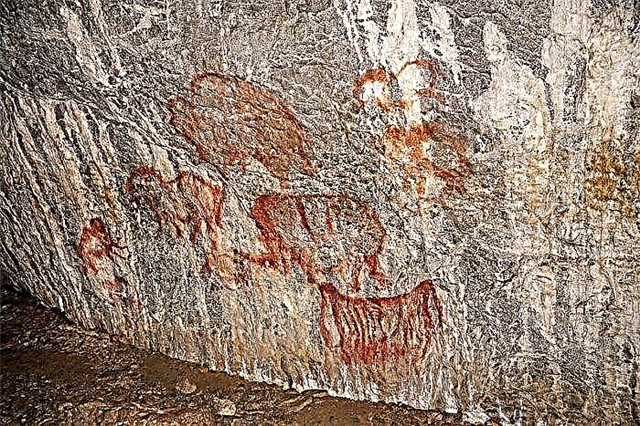
Valley of Miracles
The Mercantour National Park, which is called the "Valley of Miracles", is located near the Côte d'Azur. In addition to natural beauty, tourists are attracted by Mount Bego - a real archaeological site, where tens of thousands of ancient paintings of the Bronze Age were discovered. These are geometric shapes of unknown purpose, religious symbols and other mysterious signs.

Altamira cave
The cave is located in the north of Spain in the autonomous community of Cantabria. She became famous for her rock paintings, which are made in polychrome technique using a variety of natural dyes: ocher, hematite, coal. The images refer to the Madeleine culture that existed 15-8 thousand years BC. The ancient artists were so skillful that they managed to give the images of bison, horses and boars a three-dimensional appearance, using the natural unevenness of the wall.

Chauvet cave
Historical monument of France, located in the valley of the Ardèche river. About 40 thousand years ago, the cave was inhabited by ancient people who left behind more than 400 drawings. The oldest images are over 35 thousand years old. The murals are perfectly preserved due to the fact that for a long time they could not reach Chauvet; it was discovered only in the 1990s. Unfortunately, tourists are not allowed to enter the cave.

Tadrart-Akakus
Once upon a time, on the territory of the hot and practically barren Sahara, there was a fertile and green area. There is a lot of evidence of this, including rock paintings found in Libya in the Tadrart-Akakus mountain range. From these images, you can study the evolution of the climate in this part of Africa, and trace the transformation of the flowering valley into a desert.

Wadi Methandush
Another masterpiece of rock art in Libya, located in the southwest of the country. The drawings of Wadi Methandush depict scenes with animals: elephants, cats, giraffes, crocodiles, bulls, antelopes. It is believed that the oldest were created 12 thousand years ago. The most famous painting and unofficial symbol of the area is two large cats fighting in a duel.

Laas Gaal
A cave complex in the unrecognized state of Somaliland with perfectly preserved ancient drawings. These murals are considered the most surviving among all on the African continent, they date back to 9-3 millennia BC. Basically, they are dedicated to the sacred cow - a cult animal that was worshiped in these places. The images were discovered in the early 2000s by a French expedition.

Bhimbetka rock dwellings
They are located in India, in the state of Madhya Pradesh. It is believed that erectus (Homo erectus - Homo erectus), the direct ancestors of modern people, still lived in the Bhimbetka cave complex. The drawings discovered by Indian archaeologists date back to the Mesolithic era. It is interesting that many of the rituals of the inhabitants of the surrounding villages are similar to the scenes depicted by ancient people. In total, there are about 700 caves in Bhimbetka, of which more than 300 are well studied.

White Sea petroglyphs
Drawings of primitive people are located on the territory of the archaeological complex "White Sea Petroglyphs", which includes several dozen sites of ancient people. The images are located in a place called Zalavruga on the shores of the White Sea. In total, the collection consists of 2000 grouped illustrations depicting people, animals, battles, rituals, hunting scenes, and there is also a curious picture of a man on skis.

Petroglyphs of Tassilin-Adjer
A mountain plateau in Algeria, on the territory of which there are the largest-scale drawings of ancient people found in northern Africa. Petroglyphs began to appear here from the 7th millennium BC. The main plot is hunting scenes and animal figures of the African savannah. The illustrations were made in different techniques, which testifies to their belonging to different historical eras.

Tsodilo
The Tsodilo mountain range is located in the Kalahari Desert in Botswana. Here, over an area of more than 10 km², thousands of images created by ancient people have been discovered. The researchers claim that they cover a time period of 100 thousand years. The earliest creations are primitive contour drawings, the later ones represent an attempt by artists to give drawings a three-dimensional effect.

Tomsk Pisanitsa
Natural Museum-Reserve in the Kemerovo Region, created in the late 1980s with the aim of preserving rock art. On its territory there are about 300 images, many of them were created about 4 thousand years ago. The earliest date back to the 10th century BC. In addition to the works of ancient people, tourists will be interested in looking at the ethnographic exhibition and museum collections that are part of the Tomsk Pisanitsa.

Magura cave
The natural site is located in northwestern Bulgaria near the town of Belogradchik. During archaeological excavations in the 1920s, the first evidence of the presence of an ancient man was found here: tools, ceramics, jewelry. Also, more than 700 samples of rock paintings were discovered, created supposedly 100-40 thousand years ago. In addition to the figures of animals and people, they depict stars and the sun.

Gobustan reserve
The protected area includes mud volcanoes and ancient rock paintings. More than 6 thousand images were created by people who lived on this land from the primitive era to the Middle Ages. The plots are quite simple - scenes of hunting, religious rites, figures of people and animals. Gobustan is located in Azerbaijan, about 50 km from Baku.

Onega petroglyphs
Petroglyphs were found on the eastern shore of Lake Onega in the Pudozh region of Karelia. Drawings dating back to 4-3 millennia BC are placed on the rocks of several capes. Some illustrations are quite impressive 4 meters in size. In addition to the standard images of people and animals, there are also mystical symbols of unknown purpose, which have always frightened the monks of the nearby Murom Holy Dormition monastery.

Rock carvings in Tanum
A group of petroglyphs discovered in the 1970s in the Swedish commune of Tanum. They are located along a 25-kilometer line, which in the Bronze Age was believed to have been the shore of a fjord. In total, archaeologists have discovered about 3 thousand drawings, collected in groups. Unfortunately, under the influence of unfavorable natural conditions, petroglyphs are endangered. Gradually it becomes more and more difficult to distinguish their outlines.

Cave paintings in Alta
Primitive people lived not only in a comfortable warm climate, but also near the Arctic Circle. In the 1970s, in the north of Norway near the city of Alta, scientists discovered a large group of prehistoric drawings, consisting of 5 thousand fragments. These paintings depict human life in harsh weather conditions. Some illustrations contain ornaments and signs that scientists have not been able to decipher.

Coa Valley Archaeological Park
An archaeological complex created at the site of the discovery of prehistoric painting that dates back to the Paleolithic and Neolithic periods (the so-called Solutrean culture). There are not only ancient images, some elements were created in the Middle Ages. The drawings are located on rocks that stretch for 17 km along the Koa River. Also in the park is the Museum of Art and Archeology, dedicated to the history of the area.

Newspaper Rock
In translation, the name of the archaeological site means "Newspaper stone". Indeed, the petroglyphs that cover the rock resemble a typical typographic print. The mountain is located in the US state of Utah. It is not known for certain when these signs were created. It is believed that they were applied to the cliff by the Indians both before the arrival of the European conquerors on the continent, and after that.

Edakkal Caves
One of the archaeological treasures of India and all mankind can be attributed to the Edakkal caves in the state of Kerala. In the Neolithic era, prehistoric petroglyphs were painted on the walls of the grottoes. These characters have not yet been deciphered. The area is a popular tourist attraction; visiting the caves is possible only as part of an excursion. Self-entry is prohibited.

Petroglyphs of the archaeological landscape of Tamgaly
Tamgaly tract is located about 170 km from Almaty. In the 1950s, about 2 thousand rock paintings were discovered on its territory. Most of the images were created in the Bronze Age, there are also modern creations that appeared in the Middle Ages. Based on the nature of the drawings, scientists put forward the assumption that an ancient sanctuary was located in Tamgaly.

Petroglyphs of the Mongolian Altai
The complex of rock signs, located on the territory of Northern Mongolia, covers an area of 25 km² and stretches for 40 km in length. The images were created in the Neolithic era more than 3 thousand years ago, there are drawings and older ones, 5 thousand years old. Most of them depict deer with chariots, there are also figures of hunters and fabulous animals resembling dragons.

Rock painting in the Hua mountains
Chinese rock art was discovered in the south of the country in the Hua mountain range. They represent figures of people, animals, ships, celestial bodies, weapons, painted in rich ocher color. In total, there are about 2 thousand images, which are conventionally divided into 100 groups. Some pictures add up to full-fledged plots, where you can see a solemn ceremony, ritual or procession.

Swimmers Cave
The grotto is located in the Libyan desert on the border of Egypt and Libya. In the 1990s, ancient petroglyphs were discovered there, which are more than 10 thousand years old (Neolithic era). They depict people floating in the sea or in another body of water. That is why the cave was named by its modern name. After people began to visit the grotto in large quantities, many of the drawings began to deteriorate.

Horseshoe Canyon
The gorge is part of the Canyonlands National Park, which is located in the US state of Utah. Horseshoe Canyon became famous for the discovery of ancient drawings by nomadic hunter-gatherers in the 1970s. The images are printed on panels about 5 meters high and 60 meters wide, they represent 2-meter humanoid figures.

Val Camonica petroglyphs
In the first half of the 20th century, the largest collection of rock carvings in the world was discovered in the Italian valley of Val Camonica (Lombardy region) - more than 300 thousand drawings. Most of them were created in the Iron Age, the latest belong to the Kamun culture, about which ancient Roman sources write. It is curious that when B. Mussolini was in power in Italy, these petroglyphs were considered proof of the origin of the highest Aryan race.

Valley twifelfontein
The most ancient settlements appeared in the Namibian valley of Twifelfontein more than 5 thousand years ago. Around the same time, cave paintings were created depicting the typical life of hunters and nomads. In total, scientists have counted more than 2.5 thousand fragments, most of them are about 3 thousand years old, the youngest are about 500 years old. In the middle of the 20th century, someone stole an impressive part of the slabs with petroglyphs.

Chumash painted cave
A national park in the state of California, on the territory of which there is a small sandstone grotto with murals of the Chumash Indians. The plots of the paintings reflect the ideas of the aborigines about the world order. According to various estimates, the drawings were created in the period from 1000 to 200 years ago, which makes them quite modern in comparison with prehistoric cave paintings elsewhere in the world.

Petroglyphs of Toro Muerto
A group of petroglyphs in the Peruvian province of Castilla, which were created in the 6th-12th centuries during the Huari culture. Some scholars suggest that the Incas had a hand in them. The drawings depict animals, birds, celestial bodies, geometric ornaments, as well as people in a dance, probably performing some kind of ritual. In total, about 3 thousand painted stones of volcanic origin were found.

Easter Island petroglyphs
One of the most mysterious places on the planet, Easter Island, can surprise you not only with giant stone heads. Ancient petroglyphs painted on rocks, boulders, and cave walls are of no less interest and are considered an important archaeological heritage. They represent either schematic representations of a technical process, or non-existent animals and plants - scientists only have to figure out this issue.





